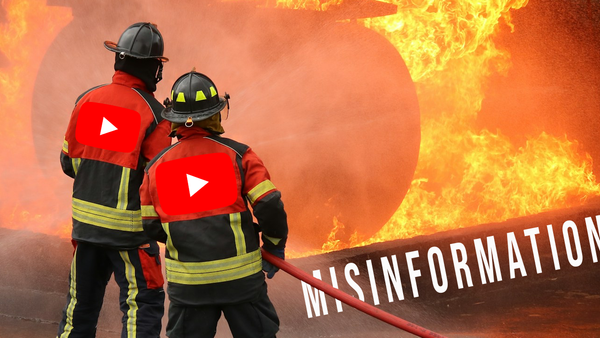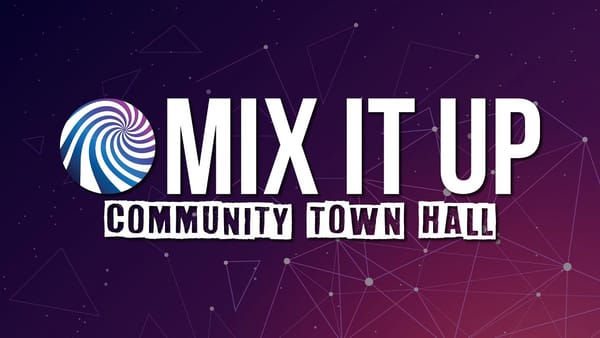When Live Streaming Becomes a Digital Colosseum: The Dark Reality of Platform Responsibility
Imagine watching your favorite creator go live and chat explodes with donations, not celebrating success, but paying to watch them break down on camera. The more pain, the bigger the payout. Welcome to the dark economy of digital coliseums where human suffering has become content.

Imagine this: You're watching your favorite creator go live when suddenly the chat explodes with donations—not to celebrate the creator's success, but to pay for their breakdown on camera. The more pain, the bigger the payout. Welcome to the dark economy of digital coliseums where human suffering has become the ultimate content strategy, and platforms collect their cut from every dollar of misery.
Tonight, I want to ask the question that keeps creator advocates up at night: When the audience becomes the predator and creators become the prey, who's really responsible for drawing the line? And more importantly, where exactly should that line be drawn?
The Incident That Started It All
This all stems from an incident a few weeks ago on Kick, where a French streamer was doing a subathon—one of those multi-day streaming events. The disturbing part was that this person became a victim of abuse on their own stream, with viewers paying for bits, donations, and subscriptions specifically to see them suffer.
This sparked my interest because we're seeing a growing underbelly in the live streaming economy, particularly in the IRL category. Streamers walk around with Bluetooth speakers so when viewers pay for text-to-speech messages, the AI voice broadcasts these messages publicly. These messages are often cringeworthy and offensive, deliberately causing embarrassment to the streamer, varying in severity depending on geographic location and cultural context.
This has me wondering: are we really reaching a point where streaming platforms have become like the Roman Colosseum? You have modern-day gladiators performing increasingly extreme acts for the entertainment of thousands. And the bloodier and more brutal the content, the more views and clicks it generates.
The Wild West of Streaming Platforms
Let's examine a few key points here. When Kick first launched, it quickly earned a reputation as the Wild West of streaming platforms. Twitch had its problematic creators too—I'm using air quotes here—but was relatively tame in comparison. On Twitch, you might see people being occasional nuisances to the public during IRL streams, but it rarely escalated beyond that.
Kick, however, raised the stakes by becoming the fallback platform for creators banned from YouTube or Twitch. We've witnessed an escalation of behaviors: streamers embarrassing themselves for donations or being disruptive to the public. This approach essentially reduces ordinary people to unwitting pawns in these creators' content schemes.
Johnny Somali exemplifies this perfectly. He traveled throughout Japan and South Korea, deliberately causing disruptions and showing complete disregard for the public. He consistently viewed ordinary people as "NPCs"—just background characters to help him gain clout. Now he's likely facing years in a South Korean prison for breaking numerous laws and social norms.
And he's not alone. Vitality—I believe that's his name—is currently detained in a Filipino prison. He's experiencing the "find out" stage after his "messing around."
The Platform's Dilemma
When I first visited Kick, I encountered a lot of racist content. They've since cleaned up considerably. Kick has made genuine efforts over the past year to shed its "anything goes" reputation. Many early creators aren't happy about this shift because they're finally facing consequences for their actions.
But returning to what sparked this discussion—the French streamer Jean Pormanove. According to headlines, two weeks after his death during a livestream, one of the people involved in the filmed violence told RTL that "everything was agreed upon." This person tragically passed away on stream in his sleep.
The full details aren't known yet. Authorities are still conducting an autopsy to verify that the two men—supposedly his friends and co-streamers—didn't contribute to his death.
"I regret not having been a true friend. I didn't push him to get medical help," said Safin Hamadal, a streamer implicated in the death. "Since day one, he's always been like this. For us, it was normal. We didn't know he was sick," he added, stating he had no regrets about the abuse the deceased had endured.
The Escalation of Shock Content
We're seeing more streamers pushing boundaries to attract viewers, developing what might be called "IRL shock content." This parallels the shock jocks of 1990s radio—Howard Stern, Opie and Anthony, and others. At the time, their radio pranks seemed harmless (air quotes around "harmless"), but they had real impacts on actual people.
What they said or did affected real human beings on the other side of the microphone. The problem with today's IRL shock streamers is that they view the public as NPCs in their personal role-play. These streamers don't consider others important enough to care about. If someone gets hurt, their attitude is: "I didn't do it. They did it themselves."
We saw this recently—I don't have the details handy, but I forget her name. She participated in a Twitch/Kick stream where Ice Poseidon had organized a citywide scavenger hunt. She and others were walking through a public park with paintball guns—yes, paintball guns in a public park. She fired at a woman jogging by who worked at a kayak and canoe rental kiosk, hitting her in the leg or thigh.
The streamer—not the victim—was later arrested on assault charges. The authorities noted her complete lack of remorse for shooting an innocent woman who was simply doing her job. And if you've ever been hit by a paintball gun (I haven't, but I know people who have), it's extremely painful, especially on bare skin. The victim was wearing a swimsuit because she worked near water—that's standard attire for her job.
The Mental Health Crisis
It's troubling to see the mentality of people who don't recognize the consequences of their actions. They think, "Nothing bad will happen to me—it's just content, it's meant to be funny, it's just a prank, bro." We've heard that excuse countless times: "It's just a prank, bro." Like when someone harassed a DoorDash delivery person so severely that the driver pulled out a gun and shot him.
I don't mean to make light of this, but these streamers fail to understand what their targets might be experiencing. The person they're harassing could be having the worst day of their life, and the streamer is just adding to their misery. This is especially problematic in the US, where mental health care is severely lacking. If you need mental health support, you'd better hope your insurance covers it—if you even have insurance.
We lack adequate resources to help people with mental health issues. So when you're provoking someone with a "prank" and they respond by shooting you—potentially fatally—what are you thinking? Is getting a few likes on TikTok or the possibility of going viral worth risking your life? Of course not.
Beyond public harassment, IRL shock content also affects the mental health of the streamers themselves. Take Sneako, who has been "crashing out" (as young people call it) multiple times. The combined stress and pressure from streaming and personal life causes some creators to completely self-destruct, throwing away their content creation careers.
Their chat communities deserve some blame too. These audiences push creators toward increasingly extreme behavior. A streamer might think, "Chat loves when I do this harmful activity, so I'll keep doing it." But chat is like the crowd in the Colosseum—they want to see suffering and will pay to cause more pain: "Here's five bucks. Here's another five dollars. Do a dance, stupid."
The Dangerous Precedent
These IRL shock creators can't see the forest for the trees. They miss the dangerous precedent being established when their chat dictates their actions through donations. As the money flows in, they don't recognize the side effects until years later—if they survive long enough to step back and say, "This needs to stop. My body can't take this anymore."
Tragically, for the French streamer, the cumulative stress on his body led to his death in his sleep. This is likely just the beginning. To be clear, IRL streaming itself isn't inherently problematic—it's a small minority giving the category a bad reputation. These problematic streamers are obnoxious and disrespectful toward others and often toward themselves.
Eventually, this behavior will reflect on the platforms themselves. What can Twitch, Kick, YouTube, or any other streaming platform do? That's what I want to explore next.
Platform Responsibility and Government Response
Regarding the streaming platforms themselves—what can Twitch, Kick, and others do? They're caught between a rock and a hard place. They can't be the arbiters of good behavior; they can only establish terms of service and respond when those terms are violated.
I suspect platforms will soon face increased pressure from external sources—governments, advocacy groups, and other initiatives.
For instance, Kick has accused French authorities of politicizing the streamer's death. Prosecutors have opened an investigation into the Australian platform, and a French government minister named Clarissa stated that the government would take Kick to court to "stop the damage caused by the content involved in this tragedy."
"This is not about creator safety, customer safety, or the well-being of the industry, but rather a politicized narrative that takes advantage of a tragic personal loss," Kick told BBC News.
We can't place full blame on Kick for everything that's happened. These platforms operate under "safe harbor" provisions—they typically can't proactively enforce content standards until violations are reported. We've seen this with horrific events like mass shootings streamed on Facebook (Christchurch) and Twitch (Buffalo, I believe).
Platforms do have a responsibility to act quickly when dangerous content is reported. To Kick's credit, when informed of what was happening with the French streamer, they shut down the stream, preventing VODs from being created and allowing the situation to be handled offline out of respect for those involved.
What's Coming Next
Moving forward, we'll likely see more restrictive terms of service, particularly for IRL streaming. I won't say the category will be "nerfed to the ground," but expect clearer guidelines about what constitutes acceptable IRL content and stricter rules governing streamer behavior and audience interaction.
We already see this with music-related restrictions. If you're streaming from Disney World, where copyrighted Disney music plays in the background, you need to be aware of potential copyright claims against your channel. That's a relatively minor concern compared to controlling public behavior during streams. Streamers can't control what others might do on camera—they can only cut the feed, move the camera, or relocate.
But when creators have cultivated communities that demand shock value, they're incentivized to deliver. Meanwhile, platforms will increasingly push back against this type of content.
A Call for Reflection
To summarize, serious harm has occurred on streaming platforms. We can't change the past, but we can work toward preventing similar incidents in the future. There are limits to what streamers and platforms can do without shutting down entire categories of content.
To those creating shock content: step back and evaluate what you're doing. Ask yourself if the pain and suffering you're enduring is worth the money. That's the most important question for anyone producing this type of content.
Reflect on what you're creating. Look at the community you've built—the audience that's pushing you toward increasingly extreme behavior. And don't be surprised when platforms ban you for violating their standards.
If you're creating this type of content, I'd love to hear from you. What measures are you taking to protect yourself, others, and your community from crossing lines that could lead to serious harm or even death?
Share your thoughts in the comments below or join the discussion in our Discord server, where I've created a dedicated thread for this episode of the Independent Creator podcast. If you enjoyed this, you can also listen to the audio version in your preferred podcast app in the next few days. Be sure to subscribe, and I'll see you later, taters.





